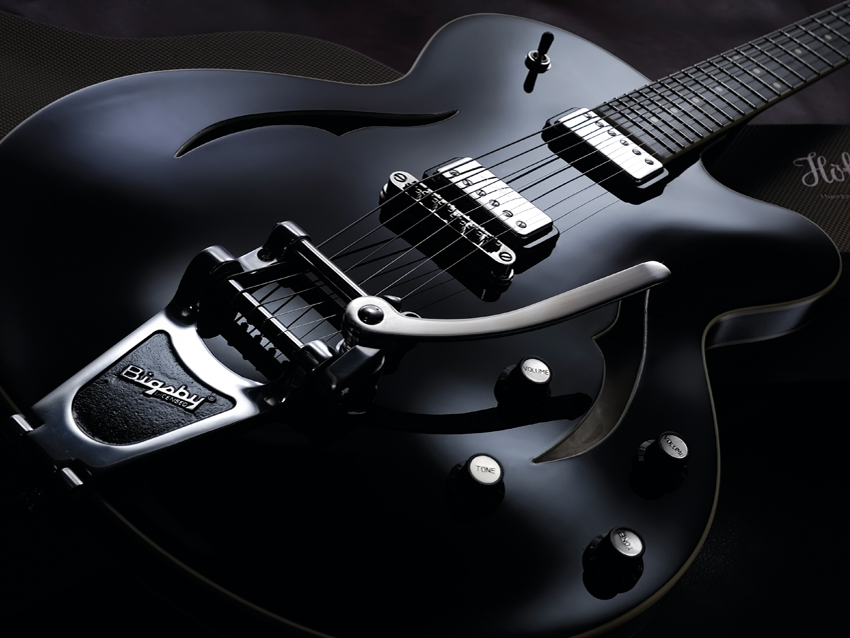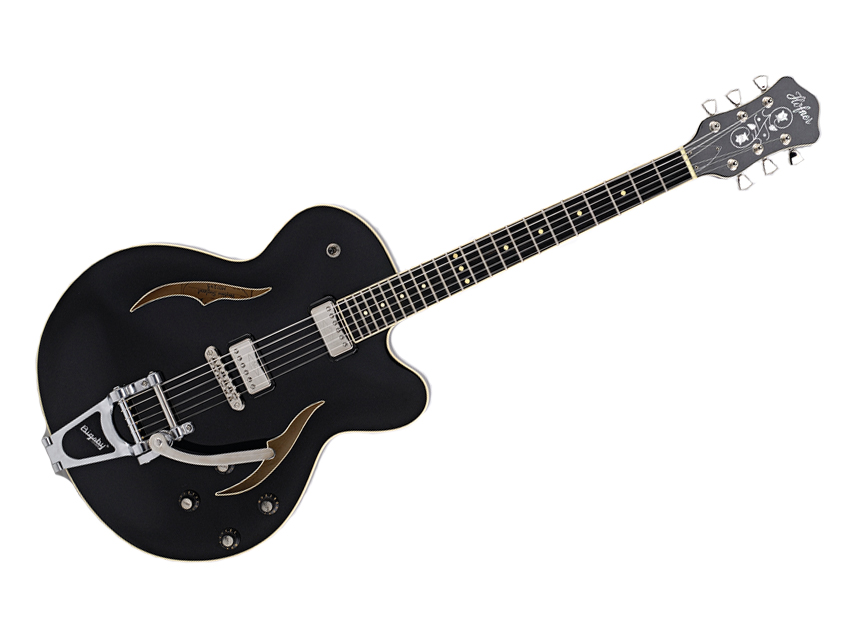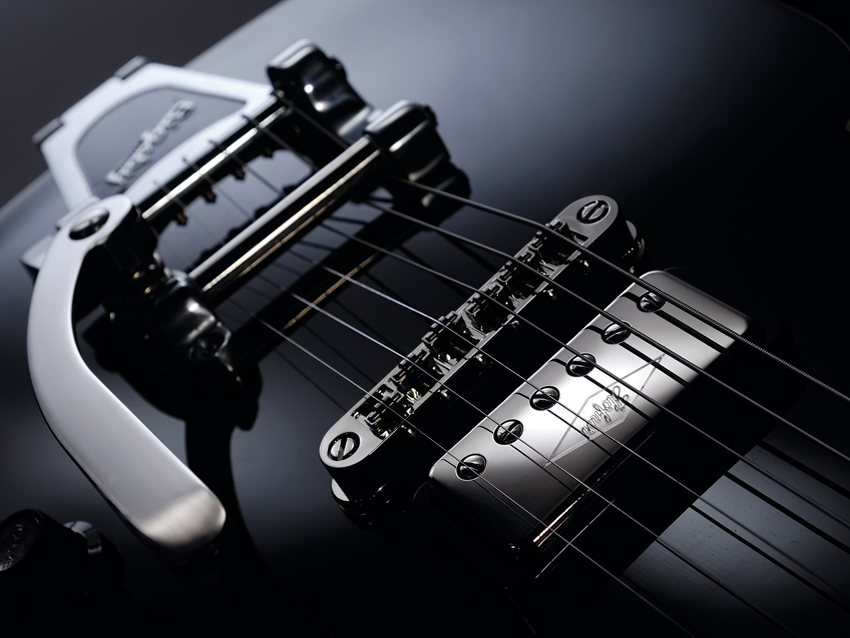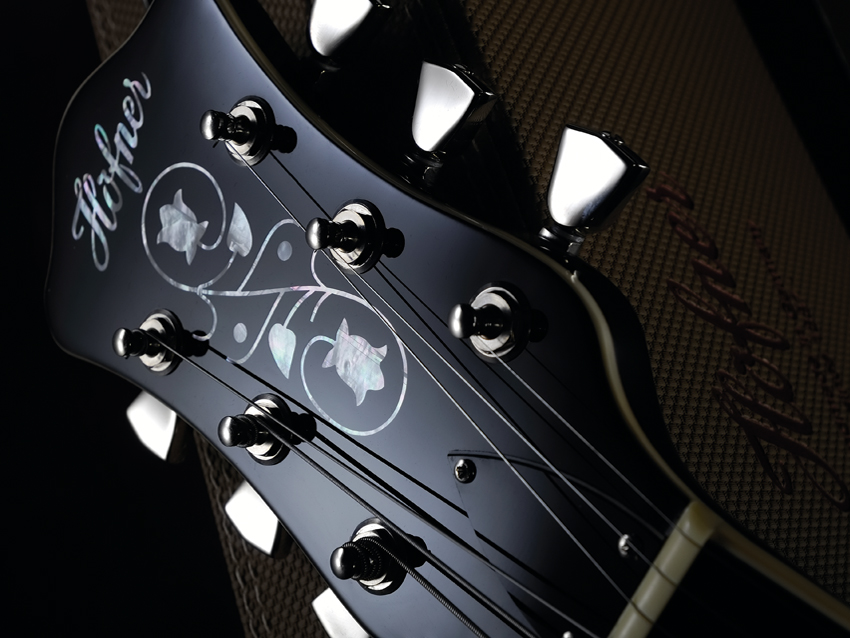MusicRadar Verdict
This semi-acoustic is certainly more individual than many others out there, but its attributes need to be carefully weighed against the outlay to see if the extra expense involved is worthwhile.
Pros
- +
Shallow depth. Open sounds.
Cons
- -
Sharp fret ends. Bigsby operation.
MusicRadar's got your back

Hofner Verythin Singlecut

Hofner Verythin Singlecut

Hofner Verythin Singlecut

Hofner Verythin Singlecut
The original Verithin debuted in 1960, and its was name coined by UK importer Selmer. But when the model was revived in 2000, Hofner decided to change the 'i' to a 'y' - simple.
The Verythin Singlecut is the latest variation on the ultra-lean theme and the first to depart from its twin-cutaway tradition.
"In the middle position, '60s-style clean tones abound and the Verythin retains a lighter, poppier tonality."
Although promoted as German-made, it actually combines Chinese woodwork with assembly, finishing and final set-up done in Germany, while components come from both countries.
The current Hofner headstock seems suitably old-fashioned and carries a set of Schaller-made tuners. It tops a glued-in maple neck employing very playable proportions, while an impeccably cut nut leads onto the super-smooth expanse of a broad radius, bound ebony fingerboard.
This employs a Gibson-like 628mm (24.75-inch) scale length and 22 medium frets that sadly suffer from sharp ends where they overlap the edge binding. Cream plastic 'clay' dots match the latter and keep position reference simple, with three denoting the 12th fret.
Build
Body construction marries laminated maple back and sides with a laminated spruce top and, unlike the original all- hollow Verithin, its modern equivalents incorporate a solid centre section that helps control feedback.
The top and back are gently arched, with their broad proportions contrasted by a rim depth that remains at the Verythin's regulation 32mm (1.25 inches), making this Hofner, we believe, the most slender single-cutaway semi-acoustic available.
The glossy black paint job is well executed and highlighted by cream binding on every edge. Twin sickle-shaped soundholes add a vintage touch, while the surviving cutaway remains typically shallow, which doesn't help upper end access, but weight certainly isn't an issue.
The two mini humbuckers are Schaller-made and look very similar to the original early '60s single-coil design, complete with diamond logo covers and surrounds with side-mounted securing screws.
Controls employ old-style Hofner knobs and the circuitry seems conventional, with a three-way selector partnering volume and tone per pickup.
The tune-o-matic-type bridge boasts roller-topped saddles that help even out operation of the licensed Bigsby. The latter provides the expected press-down semi-tone pitch drop, but the arm knocks and squeaks during use. Like many a Bigsby, this one would benefit from a little TLC.
Sounds
Unplugged, this semi-acoustic is surprisingly loud, with responsive natural sustain and a mid-dominant tonality. The pickups are useful partners, being more punchy than they look and delivering a well-balanced blend of bass and treble in all positions.
The neck selection is deep and clear, while the bridge option adds some nasal snarl - combining both increases the honky twang tally. '60s-style clean tones abound and the Verythin retains the lighter, poppier tonality for which its known.
These retro sounds are just as relevant today as they were decades ago and combined with the Bigsby shimmer it produces an evocative tone.
The Verythin Singlecut can also get quite raunchy courtesy of some gain-induced dirt, but the latter needs to be dished with care to keep things controllable on the feedback front - despite the centre block and the thin-depth body there's still plenty of air inside the guitar.
The circuitry all works as expected and the tone controls are quite effective, sweeping from full treble back to a quite open bass for a bluesier, jazzier tonality.
The Verythin Singlecut is certainly more manageable than many deeper semis of similarly broad proportions, but whether this benefit is worth the extra outlay is down to personal preference.
Value for money must also be considered when comparing this Hofner with the cheaper, all-Chinese Verythins, especially as most quality-related criticisms, such as the sharp fret ends, concern the German contribution.
That said, the Verythin Singlecut is a clean-cut and good-sounding semi-acoustic that offers another angle on Hofner's super-shallow six-string.
“For some reason, the post office shipped your guitar to Jim Root of Slipknot”: Sweetwater mailed a metal fan's Jackson guitar to a metal legend
"No one phoned me. They never contacted me and I thought, 'Well, I'm not going to bother contacting them either'": Ex-Judas Priest drummer Les Binks has died aged 73
With the same mesh-head playability and powerful new Strata module as its bigger brothers, Alesis Strata Club brings a new compact form to its best-selling range









